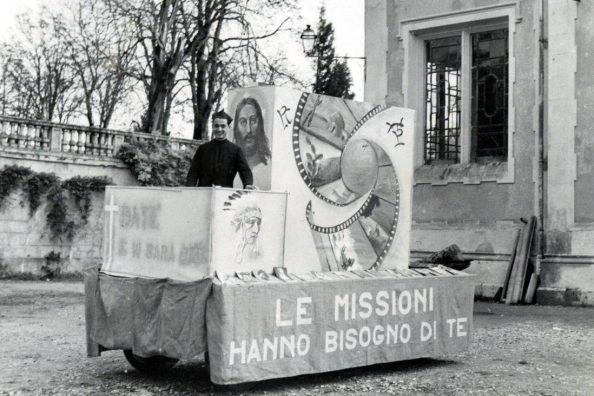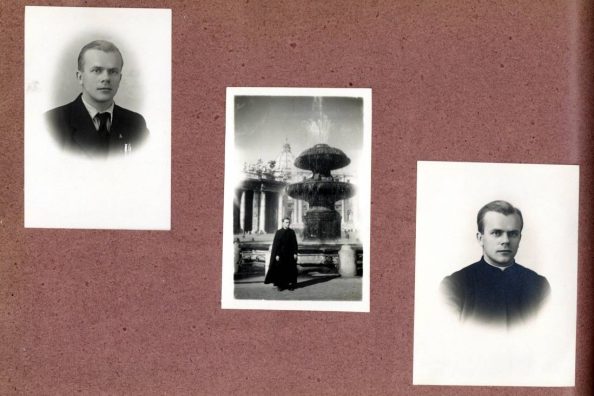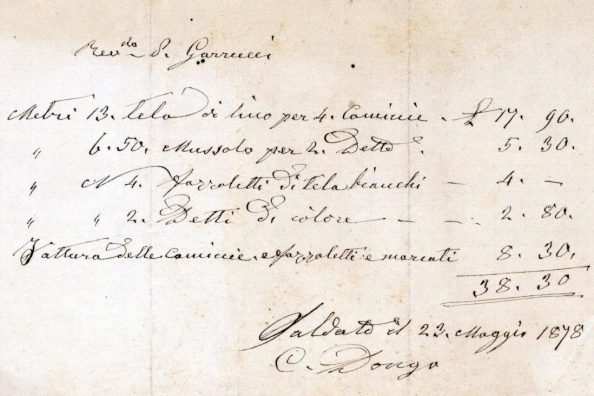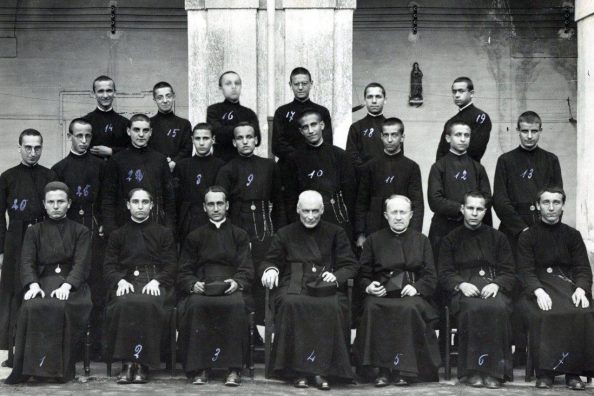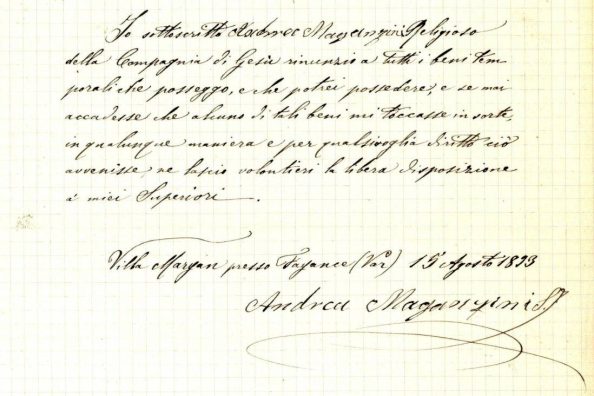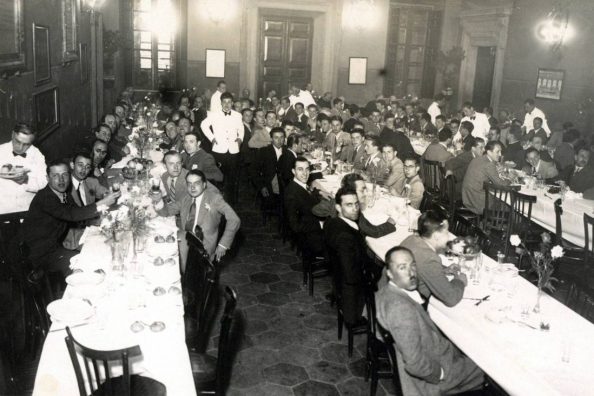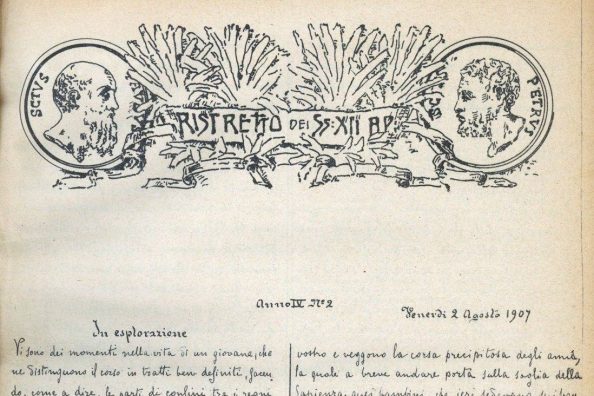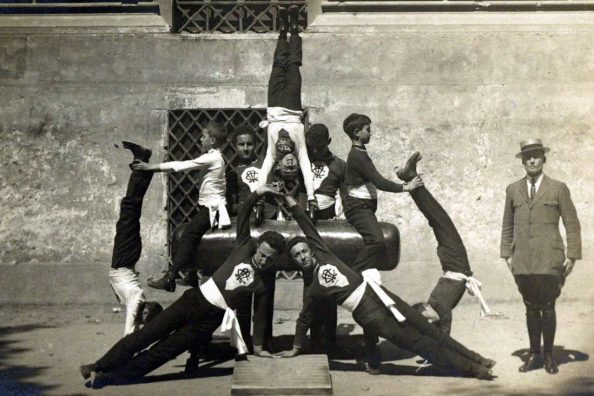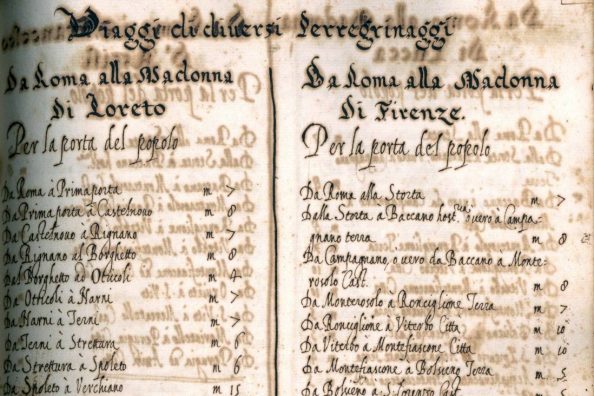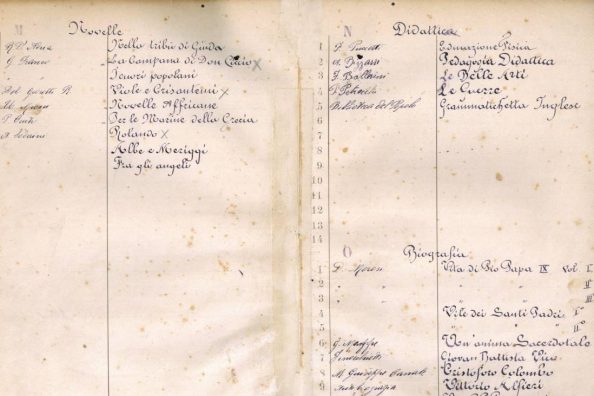Letters from Fenestrelle prison

The historian Alessandro Barbero dedicated his book ‘I prigionieri dei Savoia. La vera storia della congiura di Fenestrelle’, proving that the long-standing tradition that the Bourbon soldiers held in the prison were treated as in a lager is false.
Originally built as a military fortress, the set of fortifications was used as a prison both during the Napoleonic period and by the Savoy and Kingdom of Italy.
The sources
The source for today’s column is a corpus of about 90 letters written between 13 June 1811 and August 1813, by one of the prisoners. We therefore tell a story of life lived at Fenestrelle, fifty years before the events narrated in Professor Barbero’s book. The aspects of daily life in the Napoleonic period seem to be in line with prison conditions of the time.
The letters were written in the years when Napoleon’s conquests were at their peak.
The correspondence was probably entrusted to the Jesuits later, perhaps to edit a biography of this prisoner; today the letteres are part of the holding of the residence of Florence.
Giuseppe Mancini, priest and prisoner
Giuseppe Mancini, a priest at the time, was born in 1777. He was ordained in 1806, just five years before being imprisoned. He was not in Fenestrelle for minor offences, nor was the fort intended to house common criminals; the canon was a political opponent, although not the most dangerous. In 1808, he lived in Tuscany, he was vicar general in the diocese of Fiesole. The relationship between Napoleon and the Papacy was very tense, Napoleon wanted the Pontiff to recognise the bishops appointed by the Emperor himself, the Pontiff obviously refused.
Napoleon then ordered the capitular vicars to confer the episcopal nomination, which is denied by the Pontiff. At that moment the diocese of Florence was vacant, Napoleon indicated Mgr. D’Osmond as his ideal candidate, the Pontiff ordered the Florentine chapter not to recognise his nomination. Mancini personally went to Piacenza to inform D’Osmond, who refused to carry out the Pontiff’s wishes.
On his return to Florence, Mancini was summoned to Turin by the imperial police, arrested and taken to Fenestrelle. He was locked up in the prison because he is loyal to the Pope. This prison period strengthened his conservative sentiments and he became among the voices most in favour of the Restoration in 1815, in the aftermath of the Congress of Vienna. The figure of Giuseppe Mancini is not unknown; an entry was dedicated to him in the Dizionario Biografico degli Italiani illustri.
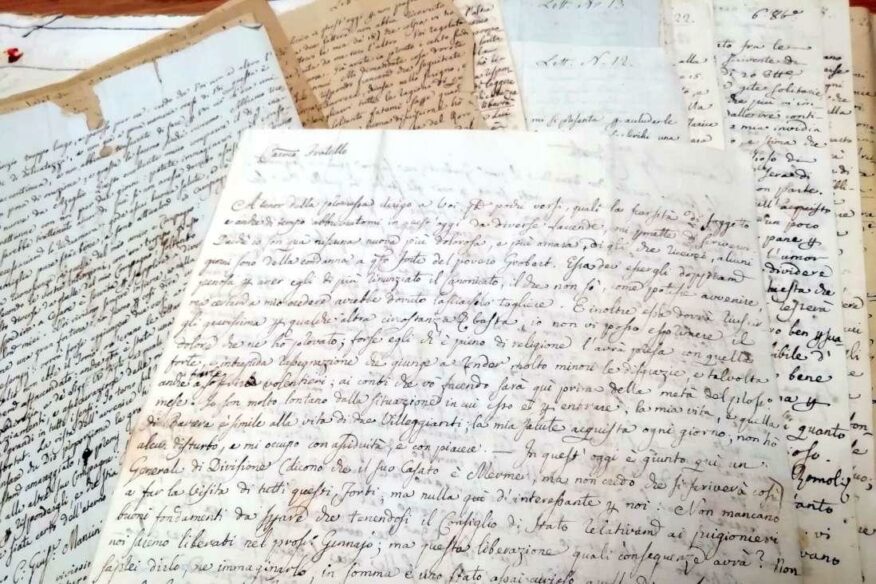
Mancini’s letters from prison
However, his years in Fenestrelle are unknown, the correspondence is in fact unpublished. Mancini wrote during his imprisonment to two correspondents, members of his own family, they are his brother and sister-in-law, through them he also managed to manage his own duties and part of the family administration.
The clergyman talks about his imprisonment and his days. From these letters we can grasp some characteristics of the everyday life of the prison and its forced inhabitants.
In prison, prisoners had to provide for their own sustenance, a custom, however, typical of the prison system of the Old Regime, in which it was the families and confraternities of charity that provided for the prisoners, not the State. This was also the case in Rome and all the cities of the Ancient Italian States. Indeed, in Fenestrelle this happened to a lesser extent, the prison providing several primary goods.
Prisoners, at least in this period and according to lineage, could receive visitors.
The Structure
Mancini provides a precise description of the forts as a whole:
the fortress known in general as the ‘Fortress of Fenestrelle’ comprises a large number of forts, but the most remarkable of these are Fort Mutin, Fort S. Charles and Fort Valois. Fort Mutin is a little lower than ours and does not communicate by works with it; the Marquise Prié was in it and there are now few prisoners. I am in Fort St. Charles, which remains in the middle, between one and the other of the aforementioned […] a large pavilion, or military palace […] in front of a square all surrounded by cannons and enormous masses of balls of every calibre, in front of this pavilion on the square itself there is another smaller one, where there are empty rooms for officers, cellars, kitchens and all the prisoners’ stores. On either side of this second pavilion immediately begins a great ascent of the Mountain, which is extremely steep […] This is truly a marvel, since it is a very high mountain, at the summit of which Fort Valois is planted, and the whole of this mountain is covered with all manner of fortifications that connect the two Forts St Charles and Valois.
The tale continues throughout the page, listing the steep stairways, no less than three thousand six hundred steps, the roads available for prisoners to stretch their legs and the many roads and tunnels that connect the forts to each other.
Today, the Fenestrelle fort can be visited, it looks exactly as Mancini described it in 1811.
Certainly it is large, at a time when heating was only provided by wood, in fact Mancini writes to his sister-in-law that he suffers from toothache and the cold, ‘the air is too lively and harsh’.
In another letter, ‘it is still perfect winter here. It has been raining for many days: we are shrouded in thick fog, or rather in clouds, and we can say that it is not raining above us, but around us, and below us: we are exactly the inhabitants of the clouds’.
In the fort where Mancini is staying there is a chapel, where mass is said and the Rosary is prayed.
Daily life
Mancini’s first letter begins with an account of a visit he received from a friend who had stayed there for two days. The Marquis D’Azeglio returned a few months later, bringing him books, cloths, sugar and chocolate. Mancini’s sister-in-law must have marvelled at this possibility and questioned her relative, who replied:
“It seems to me that she was very surprised by the visit made to us by Azeglio especially for the head of the licence to enter this formidable recess; but the most important licence, as you may suppose, is that of the purse’. So it was common practice to pay jailers to enter and visit prisoners.
We learn more about Mancinelli’s imprisonment, who shares a room with another prisoner Ferdinando de Barrera:
“we always live together, and in the same room: this is a great fortune for me: we are, so to speak, one heart; he relieves me extremely and sets me good examples.”
Letters are a valuable communication tool, used both by fellow prisoners to leave their own message and by others like the prisoner Valentini, a way to keep in touch with the outside world.
The conditions of captivity are good, we find out from a description of one of the captains in charge of surveillance, in a passage of the same letter there is also a description of the fort:
[…] this is an excellent person and amiable beyond belief, he favours us sometimes and regards us with an eye of kindness, he is loved by all for his virtue.
Cuisine
With regard to food he says:
“as for the kitchen, there is only one for the whole community, as you suppose, but there is not perfect uniformity in the food that goes to each one, since one eats separately in one’s own room, alone, some with a companion as I do with Barrera, some with several companions. You can ask the wine cellar for anything you like, I mean simple things of average cost: for example I always eat eggs instead of boiled meats. The time [for lunch] is half past noon in the morning and 9 o’clock in the evening. [del pranzo]
Prisoners can write letters and send them three times a week: on Mondays, Wednesdays and Fridays by nine o’clock in the morning. Mail arrives at the Fort on Tuesdays, Thursdays and Saturdays by eight o’clock in the evening.
The conditions are also better, in some respects, than in many other places of detention, speaking of the linen:
“with regard to the sheets those are provided by the Fort, so are the table linen”.
What is not provided by the Fortress, if it cannot be delivered personally by someone, takes about two months to arrive by post.
We have only been able to retrace a few passages from Mancini’s numerous letters, which certainly deserve more in-depth study.
In 1814 Mancini returned free and four years later was appointed bishop of Massa Marittima in 1818. In 1824 he became archbishop of Siena, a post he held until his death.
Bishop Mancini survived Napoleon for several decades, dying in 1855 in Siena, a convinced supporter of the Old Regime.
Maria Macchi
